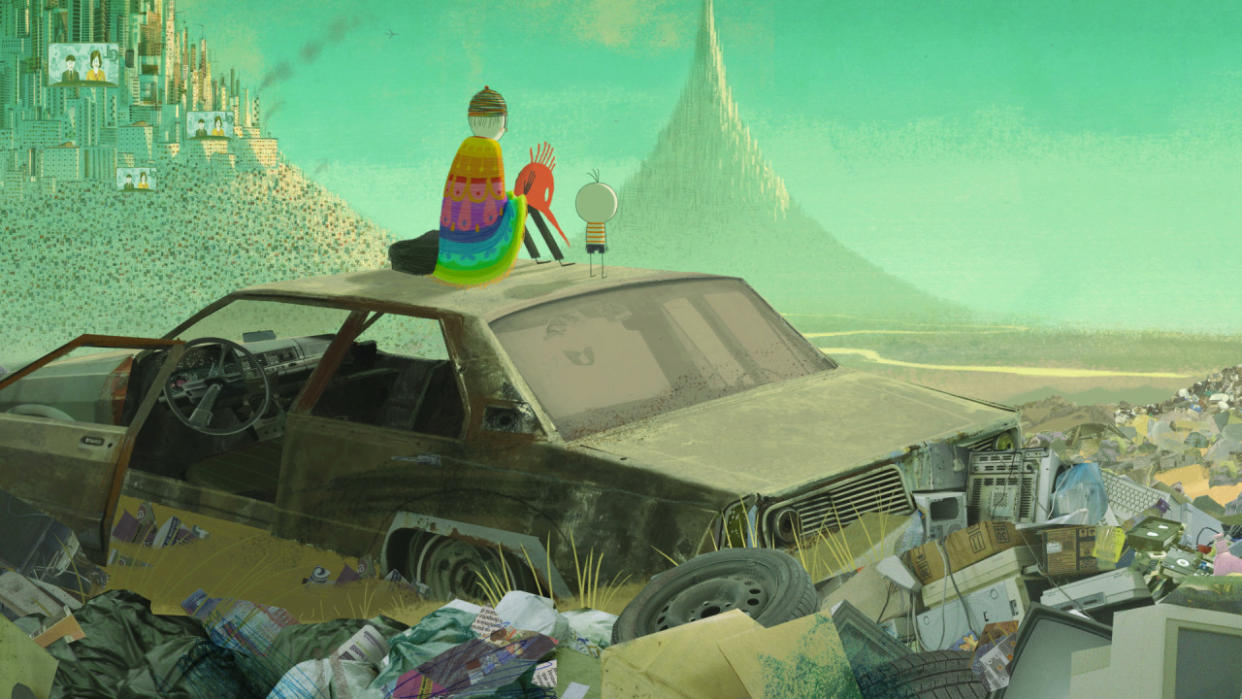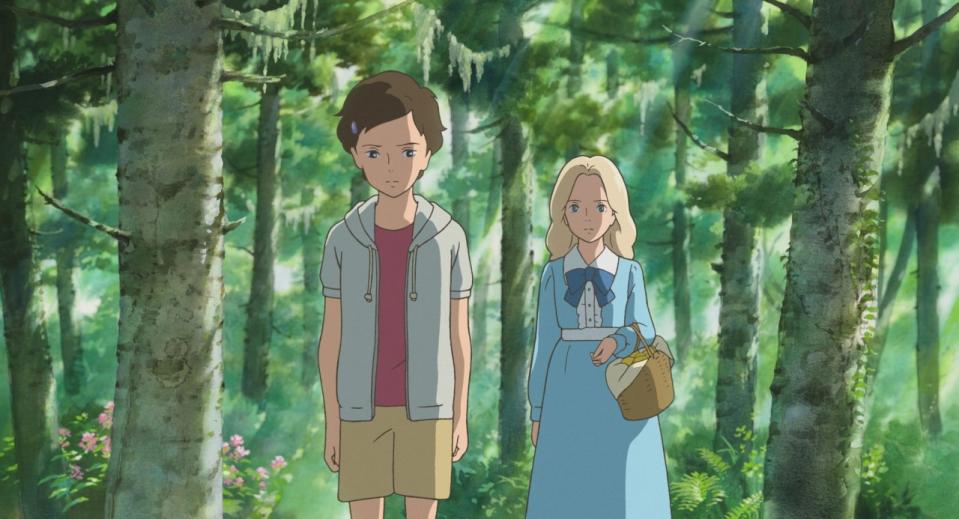Oscars 2016: All You Need to Know About the Two Wonderful Wild Cards Up for Best Animated Feature

‘Boy and the World’ (GKids)
In past Oscar years, the Best Animated Feature category has often had at least one or two dubious nominees, whether it was Treasure Planet in 2002 or Shark Tale in 2004. This year’s line-up though, is a cartoon lover’s dream, starting with Pixar’s beloved summer hit Inside Out, as well as a pair of acclaimed stop-motion features, one kid-friendly (Aardman Animations’ Shaun the Sheep Movie) and the other decidedly not (Charlie Kaufman and Duke Johnson’s Anomalisa). The final two nominees, Brazil’s Boy and the World and Japan’s When Marnie Was There, may be lesser-known by comparison, but they’re definitely not lesser quality. Before the Oscars air on Feb. 28, you should make a point of seeking them out. The tender ghost story Marnie is currently available on Blu-ray and DVD, while Boy and the World, which mingles joy and sadness as expertly as Inside Out, is still playing in limited theatrical release.
Both films have been released in the U.S. by GKids, the New York-based distributor known for bringing international animated fare to American shores. Last year, the company made headlines when two of its releases, Song of the Sea and The Tale of the Princess Kaguya, kept the box-office hit, The Lego Movie, from a supposedly shoo-in Oscar nomination. And GKids claimed another pair of slots at this year’s ceremony, beating out such homegrown cartoon hits as The Peanuts Movie and Minions. Even though the company has yet to win an Oscar — and likely won’t this year since Inside Out is expected to cruise to an easy victory — their repeat double nomination is a testament to the strategy that GKids executives discussed with Yahoo Movies last year: picking great films from around the world and then making sure Oscar voters see them early and often. As the company’s founder, Eric Beckman, told us, “People might say that [our films] are a surprise, but I think anyone who saw them aren’t surprised at all.”
Watch the ‘Boy and the World’ trailer:
That’s certainly the case with Boy and the World; one look at the film’s trailer is enough to indicate why its nomination shouldn’t be a shock. The second feature from Brazilian animator Ale Abreu, Boy and the World is a lovingly crafted, hand-drawn allegory about a young boy’s journey from his rustic country home to the teeming big city, his journey mirroring the encroaching industrialization that’s transforming the rural economy. Sounds like heavy stuff for a kiddie cartoon, but Boy’s driving metaphor is carefully wrapped inside a gorgeous fusion of sound and imagery.
Essentially a silent film, the “dialogue” is provided by a score that incorporates samba, hip-hop and a recurring pan-flute theme reminiscent of “Peter and the Wolf.” Meanwhile, the movie’s visual aesthetic resembles childhood sketches made with colored pencils and crayons, with riots of color exploding inside the frame. “I wasn’t necessarily trying to draw like a child, but seeking to reflect the same freedom that children have to draw in whatever way they want,” Abreu writes in a director’s statement.

‘Boy and the World’ (GKids)
That freedom gives way to a deliberate rigidity as the boy enters the city, searching for his absent father and befriending a young man with whom he shares a bond that only becomes clear in the film’s final heartbreaking moments. Around him, angular machines are replacing humans inside humming factories, while well-dressed businessmen ship goods and services abroad via futuristic airships and squadrons of government enforcers march like tin soldiers through the streets. Although moments like this verge on being too heavy-handed, Boy and the World never loses its sense of youthful imagination.
Boy and the World’s relative pre-Oscar obscurity made it seem like a surprise nomination to some. The recognition for When Marnie Was There, on the other hand, is more expected due to its pedigree. Adapted from a 1967 children’s book by British novelist Joan G. Robinson, Marnie is quite possibly the final production from Studio Ghibli, the world-renowned studio co-founded by Japan’s own Walt Disney, Hayao Miyazaki, who recently announced his retirement from feature filmmaking. (Although it’s been reported that he’s currently working on a new animated short.)

‘When Marnie Was There’ (GKids)
The studio has an established history with the Oscars, dating back to 2001 when Miyazaki’s Spirited Away won the Best Animated Feature statue in the category’s second year of existence. Since then, such Ghibli titles as Howl’s Moving Castle, The Wind Rises and The Tale of the Princess Kaguya — which was directed by Miyazaki’s longtime friend and collaborator, Isao Takahata — have all received nominations as well.
Miyazaki isn’t the primary creative force behind Marnie — the director is Hiromasa Yonebayashi, who previously helmed The Secret World of Arrietty, Ghibli’s loose adaption of another Brit lit favorite, The Borrowers — but his influence is felt throughout the film. When moody foster child Yoriko is sent to a seaside town to spend the summer with relatives, she finds herself inexorably drawn to a run-down mansion and the lively girl who appears to be its sole inhabitant, Marnie. Their friendship spans the warm weather months and leaves Yoriko with an entirely new perspective on her own life.
Watch the trailer for ‘When Marnie Was There:’
Marnie’s gentle pace and rural setting echoes Miyazaki’s 1986 classic My Neighbor Totoro, as well as Takahata’s acclaimed 1991 feature Only Yesterday, which GKids recently brought to America in a new English-language version featuring the voice of Star Wars: The Force Awakens star Daisy Ridley. And while the film isn’t quite up to the impossibly high standards of either of those predecessors, it still showcases the lush visual style and thematic interests that have defined so much of Studio Ghibli’s work. Just as Sylvester Stallone’s Supporting Actor nomination for Creed is as much a career longevity award as it is for this one performance, a nomination for When Marnie Was There salutes the rich legacy of one of the world’s top animation houses.


